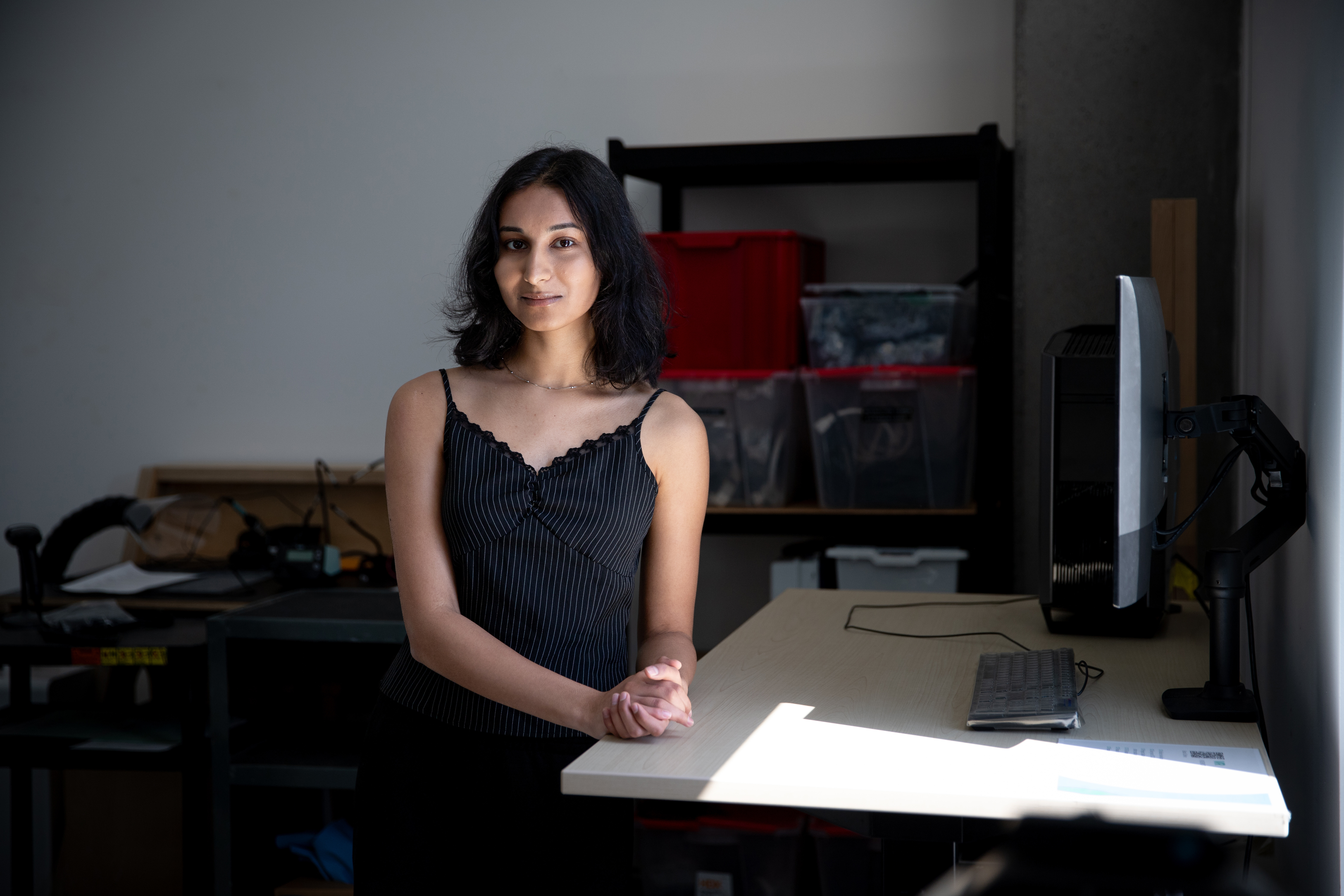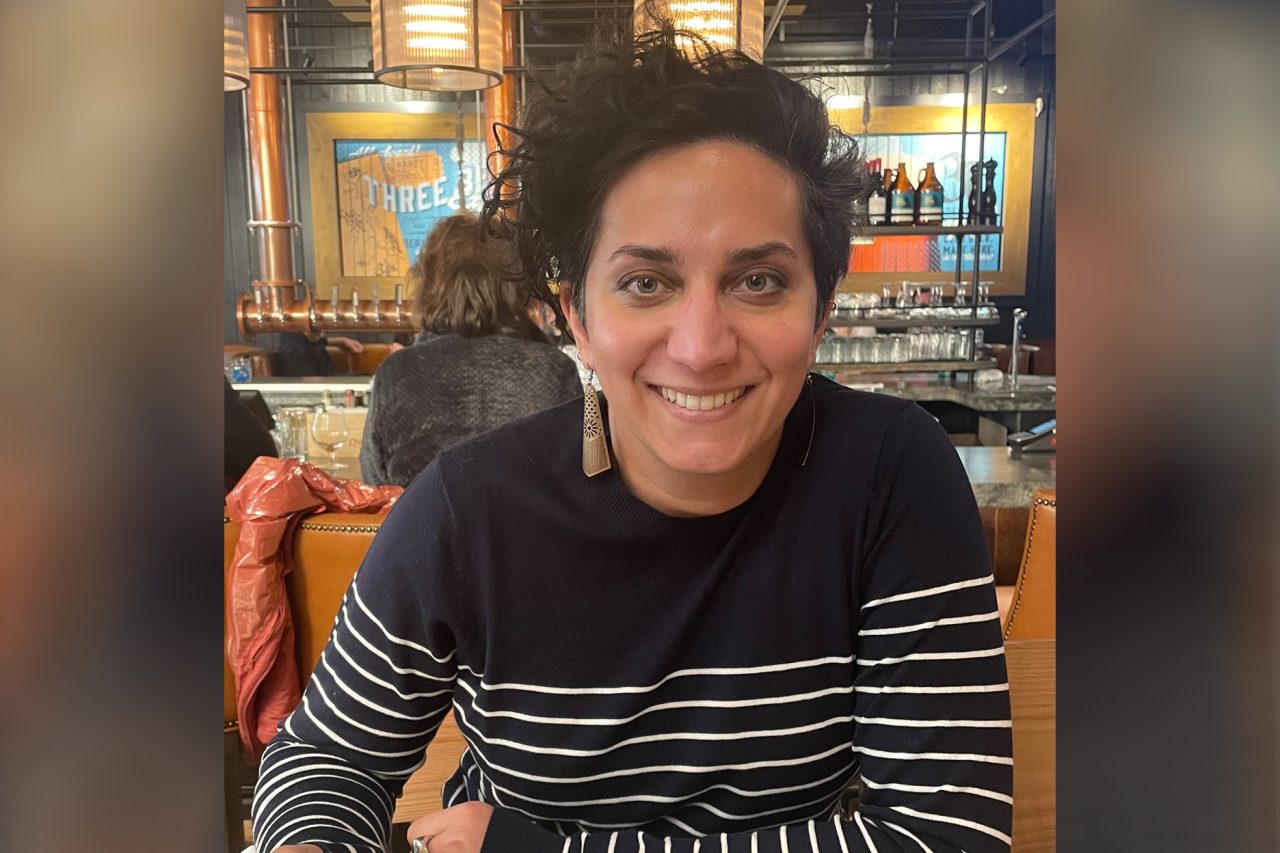Students Collaborate with Incarcerated People to Create New Artworks for Carceral Justice Project

ศซร๑ฒสฦฑ student Leela Rao, pictured in one of the Interaction Design studios at ศซร๑ฒสฦฑ, says participating in the ART & Justice project was an โeye-openingโ applied learning experience. (Photo by Perrin Grauer)
Posted on | Updated
ART & Justice is an ongoing initiative from the UBC School of Nursing supporting the health, well-being and dignity of incarcerated people through art and creative writing education.
An initiative aimed at decolonization and community-building brought students at ศซร๑ฒสฦฑ (ศซร๑ฒสฦฑ) into collaboration with incarcerated people to create new artworks.
saw students from two ศซร๑ฒสฦฑ classes begin artworks which were later finished by people incarcerated in the Pacific Institution and Mission Medium Institution โ an exchange third-year Interaction Design student Leela Rao says was transformative.
โConcepts like environmental racism and carceral injustice can feel very out of reach when you learn about them in an academic setting,โ Leela says. โHaving a real-life example and a tangible experience made those ideas feel closer to home. Itโs eye-opening.โ
Led by the University of British Columbia (UBC) School of Nursing, ART & Justice is run in partnership with the Correctional Service of Canada. The ongoing project supports the holistic health, well-being and dignity of currently and formerly incarcerated people in BC through Indigenous-guided and trauma-informed art and creative writing initiatives.
Following successful collaborations with students in Abbotsford Senior Secondary, ART & Justice was extended in 2025 to include ศซร๑ฒสฦฑ students in a third-year environmental ethics class led by faculty member and a fourth-year creative writing studio led by faculty member , both of whom teach Critical + Cultural Practice at Emily Carr University. ศซร๑ฒสฦฑโs participation in ART & Justice was facilitated by Kelsey Timler, research manager with the UBC School of Nursing.
Banafshehโs class began by learning about climate justice, critical race theory and environmental racism. An architect as well as an educator, Banafsheh also teaches how space may advance and maintain systemic oppression, discrimination and intersectional violence.
Having volunteered in the prison system in Alberta before moving to BC, she notes the persistent and longstanding of Indigenous people and other people of colour in the Canadian criminal justice system. Universities carry institutional bias as well, she adds, making a conversation between undergraduates and incarcerated people a compelling forum for exploring the convergence of these themes.
โThis art project fits well within how I frame the course because students are taught to think about how systems of violence and discrimination are created, maintained and perpetuated,โ Banafsheh says.

โThe project isnโt really about the final work. The process is by far the more meaningful part,โ says ศซร๑ฒสฦฑ faculty member Banafsheh Mohammadi. (Photo courtesy Banafsheh Mohammadi)
Banafshehโs students were tasked with creating unfinished visual artworks. Each work was sent to an incarcerated artist for completion before being returned to the class.
She says the exchange helps reveal institutional boundaries by which the humanity of โinsidersโ and โoutsidersโ is valued differently.
โInsider artists might assume theyโre not good enough to complete a work done by university students,โ Banafsheh continues. โBut the project isnโt really about the final work. The process is by far the more meaningful part.โ
Leela, who was in Banafshehโs class, has previous experience with carceral education, having volunteered since 2023 for a program which brings math teaching to prisons. She and her fellow students received their finished works in early April.
โIt was fascinating to see how different the outcomes were,โ she says. โSome pieces were very much transformed, while others, mine included, had subtle marks. But because we never met, seeing those brush strokes made the collaboration feel real. It was honestly kind of shocking.โ
Mercedesโ students wrote half of an alphabet-style poem, taking every second letter, so the final poem comprises stanzas written alternately by students and insider artists.
Mercedes, whose work as a poet often , notes providing arts education to incarcerated people is in itself a decolonial act, as is the practice of fostering collaboration between insiders and outsiders.
โWorking with ART & Justice was a way to engage studentsโ critical thinking about the inherent racism of the settler-colonial system of prisons and justice and policing,โ Mercedes says. โA way for students to learn about insidersโ rights and how frequently they are violated, about insidersโ access or lack thereof to informal and formal education. And if they weren't doing it already, it got students imagining different forms of justice counter to the current system.โ
The ART & Justice collaborative artworks will be exhibited in Pacific Institution and Mission Medium Institution through May and at in Abbotsford in June.
.